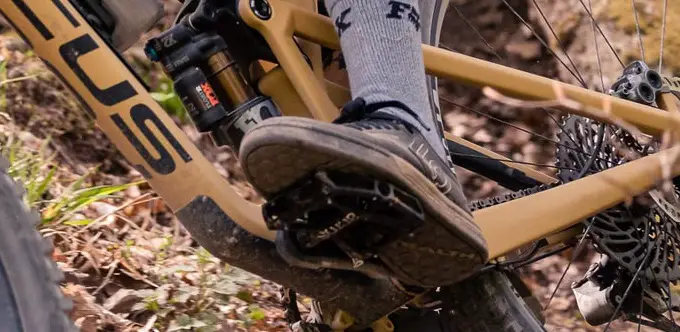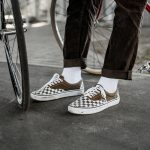When getting into the sport of mountain biking, novice riders commonly wonder if using mountain bike (MTB) shoes is necessary. More so than typical sneakers or casual shoes, MTB shoes have specific qualities and differences that can impact a rider’s comfort, pedal efficiency, control, and overall performance out on the trails. By evaluating the key features that set MTB shoes apart and considering both the potential benefits and downsides, new riders can determine if investing in a pair of MTB shoes seems worth it and likely to elevate their experience.
The Stiff Soles of MTB Shoes
One of the core differences that makes MTB shoes unlike typical walking or running shoes is the sole. MTB shoe soles are designed to be extremely stiff and rigid, rather than having the flexible bend and cushioning you find in the soles of sneakers and casual shoes. These stiffer soles result in the rider’s energy and power output transfering into the bike’s pedal more efficiently and directly. With each pedal stroke, the lack of flex in the shoe sole channels more of the rider’s generated power directly into making the crankarms spin. Over long mountain bike rides covering 10+ miles of unpredictable trail terrain, this improved energy transfer and pedaling efficiency can make a noticeable difference in conserving energy and maintaining speed. New riders looking to build their pedaling endurance and stamina could benefit from this efficiency edge. Those stiff shoe soles translate effort into momentum, rather than losing some power in a flexing sole that squishes with each stroke.
Specially Designed Treads and Grip
In addition to the foundational stiff sole, quality MTB shoes also have grippy tread patterns on the bottom that serve an important role. While sneaker treads help primarily with grip on casual surfaces for walking or running, MTB shoes have unique directional treads designed for maintaining traction and control when pedaling and maneuvering around technical trail features. The distinct tread not only grips the pedals better to prevent slipping off, but also stabilizes and anchors the rider’s feet when they need to quickly put a foot down in rough sections. The grippy stability enables better bike handling, quicker reflexes to sudden changes, and more confidence powering through root and rock gardens where flat pedals meet trail shoes. Strategically mapping the tread also channels water, mud, and debris away from the cleats on clipless shoes to retain that necessary clip-in security, no matter the weather or trail conditions. So beyond just the pedal power performance, those rugged mountain bike shoe treads allow riders to feel significantly more planted and in control when navigating unpredictable mountain biking situations.
Dialed Fit Systems Replace Laces
Another key characteristic setting quality mountain bike shoes apart from typical sneakers and casual shoes is the closure system. Rather than laces, Velcro straps, or basic buckles which can loosen and require frequent adjustment, MTB shoes have evolved to use more secure and easy-to-adjust fastening dials, cables, and ratcheting straps. These fastening mechanisms allow a rider to effortlessly fine tune the snugness of the shoe around the foot to eliminate sliding or slippage inside the shoe. Being able to conveniently adjust that locked down fit means the shoe performs almost like an extension of the foot. When riding 10+ miles over bumpy terrain, the lack of internal shoe movement means less energy wasted stabilizing the foot inside, and fewer opportunities for rubbing and hot spots leading to discomfort or even injury as sneakers might. Dialing in the right ratcheting pressure across the shoe also evenly distributes contact with the rider’s foot, keeping blood circulating better on long rides. The easy one-handed adjustability of many MTB shoe fastening systems allows riders to reach down and tweak tightness mid-ride as swelling feet change shape without even needing to dismount or stop pedaling momentum.
Potential Benefits of Riding in MTB Shoes
After understanding those core elements in which mountain bike shoes differ from standard footwear, evaluating the potential benefits can help determine if upgrading shoes seems worthwhile:
More Efficient Power Transfer
The incredibly stiff soles with no flex translate each push and pull into direct forward momentum, wasting less human energy in the process over long miles. New riders still building cardiovascular fitness and muscle endurance can get more out of each pedal stroke.
Enhanced Grip and Control
The distinct tread patterns grip flat pedals with less sliding and provide more planted stability when quickly sticking a foot down over rocky, uneven terrain. The stability lets riders feel more secure and confident handling the bike.
All-Day Comfort
Many MTB shoes specifically design the internal fit, cushioning, and ventilation to comfortably accommodate a rider’s foot shape and swelling over multiple hours without uncomfortable hot spots or numbness like ill-fitting sneakers might otherwise induce.
Injury Prevention
The lack of internal slipping and secure fit mean your foot stays properly aligned and supported inside the shoe without unexpected impacts against the sides like when sneakers get loose. This reduces injury risk to feet and ankles that loose footwear promotes.
The Potential Downsides of MTB Shoes
While dedicated MTB shoes clearly have advantages out on remote trails, they do also come with a few sacrifices to consider:
Decreased Versatility
The inflexible soles and sport-specific designs make cycling shoes rather awkward, uncomfortable and slippery for extended walking around off the bike, limiting their use for anything beyond riding.
Break-In Discomfort
The first few rides while properly molding high-performance MTB shoes to your feet will likely feel noticeably stiffer and less comfortable than worn-in sneakers until the break-in period passes.
High Upfront Cost
With research, development, and durable materials put into quality MTB shoes, getting into the sport with proper footwear often involves a high entry price, especially for some advanced clipless variants.
Conclusion
Evaluating personal riding priorities and performance expectations ultimately determines the necessity of purchasing dedicated MTB cycling shoes versus relying on typical athletic sneakers. While the rigid sole, grippy tread, and secure fit offer tangible benefits to hardcore enthusiasts and competitive riders logging high weekly mileage over demanding terrain, casual mountain bikers just starting out may not ride enough to justify upgrading their old sneakers initially. But investing in quality shoes designed specifically to optimize power transfer, control and handling when riding rooty, rocky trails does frequently deliver a noticeable performance difference that enhances confidence, comfort and stamina out on the trails.






